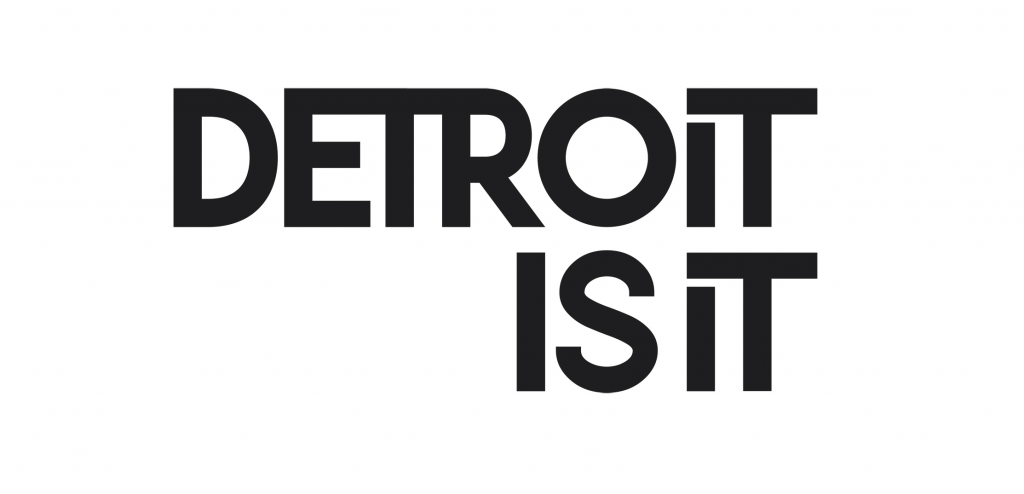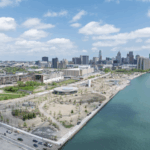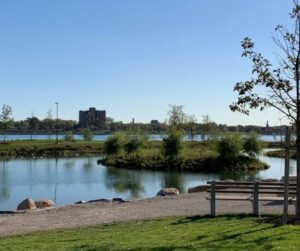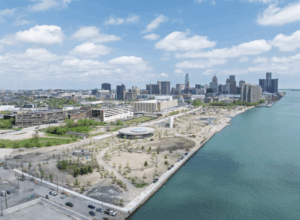Detroit’s evolution is as layered as the city itself. For Jonathan Hartzell, co-owner of Detroit Rising Development , building in Detroit isn’t just about construction — it’s about understanding the people behind the storefronts, the history of the vacant lots, and the legacy every project leaves behind.
Hartzell’s work, including the acclaimed Detroit Shipping Company, reflects a hyperlocal approach that places community impact at the center of development. With a background in construction, small business ownership, and a lifelong love for the city, Hartzell brings a perspective shaped as much by real-world experience as by vision.
Detroitisit caught up with Hartzell to talk about his philosophy on development, why storytelling matters, and how small, thoughtful projects can help shape the next chapter for Detroit.

JONATHAN HARTZELL
DII: You’ve taken a distinct approach to development in Detroit. Can you describe what “hyperlocalized development” means to you, and how it shows up in your work?
Hartzell: I don’t come from the traditional development world. My background is in construction, and I also come at this from the perspective of a small business owner. When you’re fighting for every dollar and living the day-to-day reality of running a business, you understand the real pains of operating.
For me, it’s always been about wanting to be impactful in my community. Right after college, I started a company called Good Guys Painting. My grandmother used to tell me you can’t be a good guy in business — I wanted to prove her wrong.
It starts with principles. Some people are passionate about design, others about the equity and structure of the deal. I’m passionate about the impact. Every small business owner is affected by change. When you look at placemaking and development through that lens — understanding the people behind every window, the long hours they work — it changes everything.
DII: Why is it important to consider who you’re speaking to — and what you’re saying — when undertaking development projects in Detroit?
Hartzell: When we did Detroit Shipping Company, I realized every person on a project has their own vision, shaped by their experiences. Someone visiting Detroit may fall in love with one corner but walk three blocks and have a completely different experience.
Every block tells a different story. I say a lot that a Hooters might belong somewhere, but maybe not on the block you’re standing on. You have to ask: Who is here now? Who was here before? What makes sense for this space today?
When I got the deed for the Shipping Company land, it was powerful. That land had been owned by the family since the 1930s. Before that, during the French occupation, records show Native Americans riding back on horseback for an unwitnessed land transfer. Land changes hands over centuries. You have to ask: Who are you impacting now?
DII: You’ve been involved in historic neighborhoods like Chinatown. What are the rewards and challenges of working in places with deep cultural significance?
Hartzell: Detroit has torn down a lot of its history. Sometimes you’re trying to understand what’s appropriate for an area where the physical history is gone.
On Peterborough Street, where we planted our flag, you can feel the layers — so many eras of people staking claims to the community.

LANSING SHUFFLE FOOD HALL
In Lansing, I worked on a project where a 100,000-square-foot farmers market had been around for over a century. The city scraped it away in 2010 to make room for riverfront residential and a small market, but it didn’t connect with the community anymore. The lesson is: if you don’t understand who was there before and who is there now, you can’t build a future people will embrace.
DII: Can you talk about the personal toll of staying committed to your vision while working in areas others might overlook?
Hartzell: You get pitched the same thing over and over — stacked residential with box retail at the base. But that doesn’t represent the Detroit I love.
I grew up in the ’90s and early 2000s. We’d find abandoned spots, have parties, go to Trapper’s Alley, tailgate around the old Tiger Stadium, connect as a community. That’s my Detroit — small operators, authenticity, diversity.
I’m not trying to replicate a national brand here. I want to build spaces that feel like Detroit’s own interpretation of community and culture.
DII: What have you learned about yourself as a developer and entrepreneur in Detroit?
Hartzell: When you start out, you’re wide-eyed. You think you’re more important than you are.
Over time, you rub the salt out of your eyes and realize you’re just one piece of a bigger whole. You do your best, try to have a positive impact, and be honest with people.
Sometimes people don’t like what you’re doing. I’ve tried to make myself available. You can’t know everyone’s story — but you can listen and be honest about your own.
DII: What’s your philosophy on scale? Can small, localized projects have more long-term impact than large-scale developments?
Hartzell: You need both.
Larger developments — like Brush Park — needed scale to work. But small developments are critical too. They give mom-and-pop businesses a chance to create localized spaces.

DETROIT SHIPPING COMPANY
The sad part is when buildings get torn down, you lose opportunities for small developers to come in and rehabilitate assets. That’s why islands like Peterborough and 2nd survive — because not everything was scraped away.
When we did Detroit Shipping Company, we were ahead of the curve on property values. I was lucky. But the answer is: Detroit needs a mix of large, midsize, and small projects.
DII: What do you think mainstream narratives about Detroit development often miss?
Hartzell: Before COVID, there was a lot of noise about gentrification and tax abatements. And I get it — it’s complicated.
But I live on both sides of the fence. Big developers getting tax breaks create space for small operators like me to thrive on the periphery.
Without major investment from groups like Olympia, you probably wouldn’t see small boutique projects popping up nearby. We’re completely different types of developers, but we benefit from each other. Detroit needs both.
DII: With projects like Detroit Shipyard, what role does art, placemaking, or storytelling play in your developments?
Hartzell: It’s huge.
When you design a space, you have to think about who you’re speaking to. Some people notice the structure, the craftsmanship in a building. Others notice the murals, or the food.
Food can be art. Windows can be art. Containers can be art. We left a lot of blank space intentionally at Shipping Company — to let artists, food makers, and retailers tell their own story.
DII: What’s your long-term vision for Detroit Rising Development — and what kind of legacy do you hope to leave behind?
Hartzell: I guess a bit selfishly, I want my kids to be able to say, “My dad did that.”
My great-grandfather owned a market in Hamtramck. My wife’s family owned historic buildings. That family pride means a lot.
For Detroit, I want people to say, “You have to check out that place.” I want the community around our projects to feel proud.
At Detroit Shipping Company, we tried to curate a blend of ages, demographics, cultures, and food styles. That matters. It’s about honoring the city’s complexity — and leaving it a little stronger than you found it.
As always, be sure to subscribe to our newsletter for regular updates on all things Detroit.






















